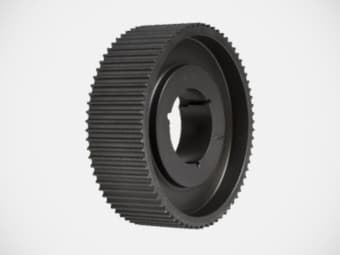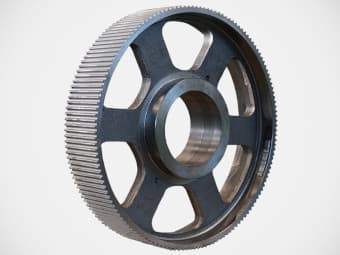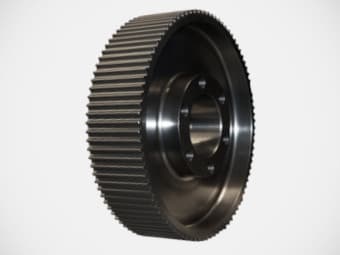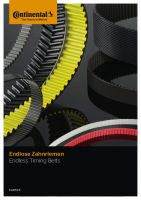Custom Made Timing Belt Pulleys
Timing Belt Pulleys are used with all types of HTD, STD, CTD, GTR, H.O.T., T and AT timing belts and timing belts with trapezoidal inch profile. The basic types of pulleys are made of steel, cast iron or aluminium alloy in a design with a cylindrical bore with a keyway, as pulleys for Taper Lock bush or according to another design. As a semi-finished product for further modifications, it is also possible to produce pulleys with a basic cylindrical bore.
They can also be custom made from other materials or according to drawings and special customer requirements.

Timing Pulley Types Overview
| Pulley Type | Description | Illustration |
|---|---|---|
Solid Timing Pulleys with Hub and 2 Flanges |
Solid pulleys are machined from solid material or manufactured as castings. They are suitable for use with small dimensions. Aluminum alloy is often chosen as a material when a lower weight is required. The flanges serve to guide the timing belt and prevent it from sliding off the pulley. |
 |
Solid Timing Pulleys with Weight Reduction |
Solid pulleys are machined from solid material or manufactured as castings. Design reduces weight, although the pulleys still have a compact shape. They are suitable for use with small and medium dimensions. They can be, for example, with a cylindrical hole or in a design for Taper Lock conical bushes. |
 |
Timing Pulleys with Round or Shaped Holes |
Pulleys with shaped holes produced as castings are suitable for medium and large dimensions. Design with shaped holes reduces weight, although the pulleys still have a compact shape and are suitable even for high speeds. |
 |
Timing Pulleys with Lugs |
Pulleys with lugs are produced as castings and are suitable for medium to largest dimensions. Design with lugs significantly reduces weight. Caution – pulleys are only suitable up to a certain speed (most often up to 30 m/s). At higher speeds, the pulley may break and rupture. |
 |
Special Timing Pulleys |
Special pulleys are manufactured as castings or workpieces. They are used in cases where it is not possible to use conventional constructions or their special design is required. These are most often complex medium to largest pulleys. |
 |
Typical Applications
The timing pulleys are designed for all types and profiles of timing belts.
They are typically used in machine tools, small machinery, conveyors, compressors, packaging and printing machines, in the food, automotive, paper and chemical industry and in many other machines.
Materials
Steel, cast iron, aluminum alloy, stainless steel, plastic or other materials of adequate strength.
Documents for Download
Questions about This Pulley Category?
Don’t hesitate to contact us with any questions about products in this category.






